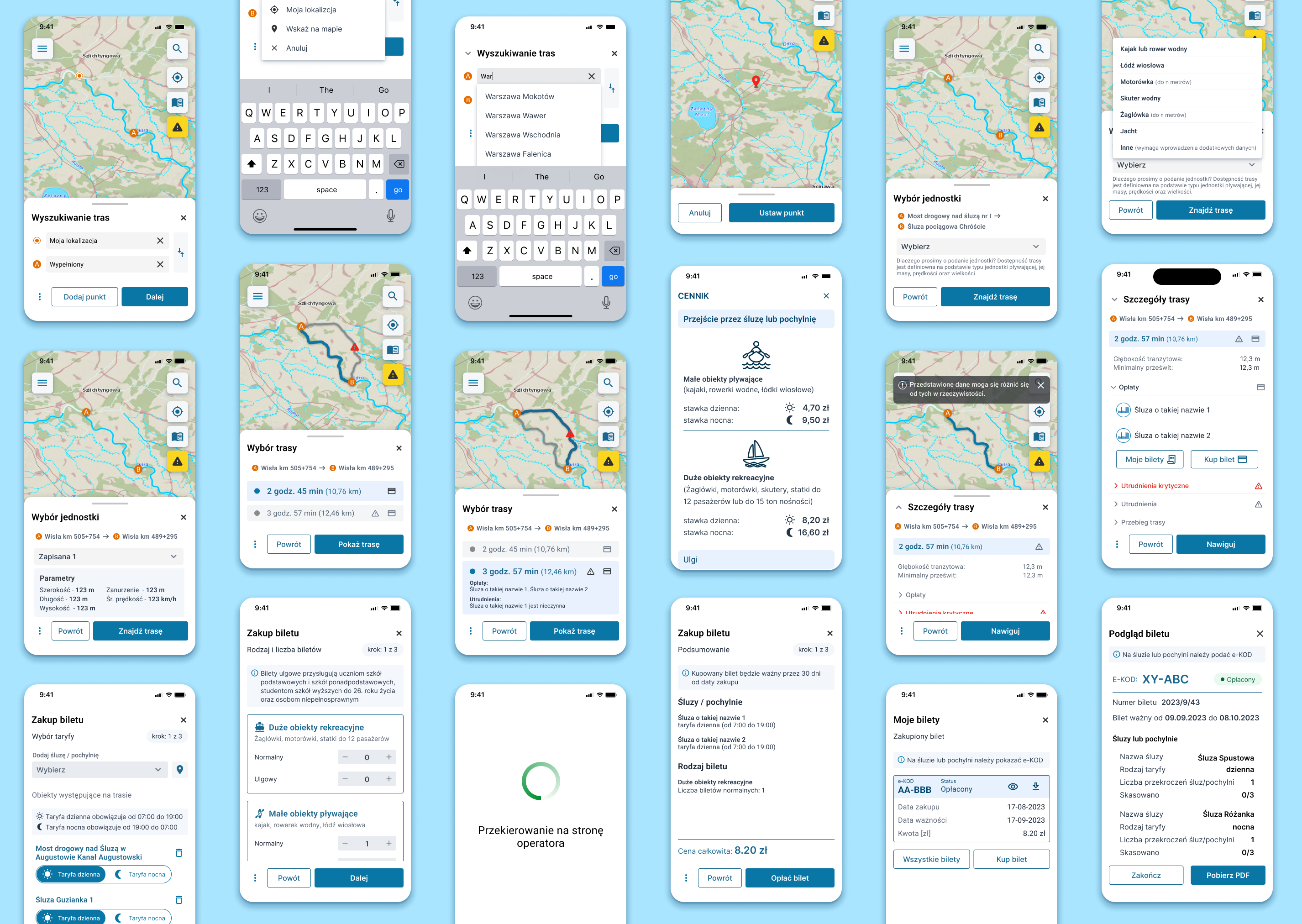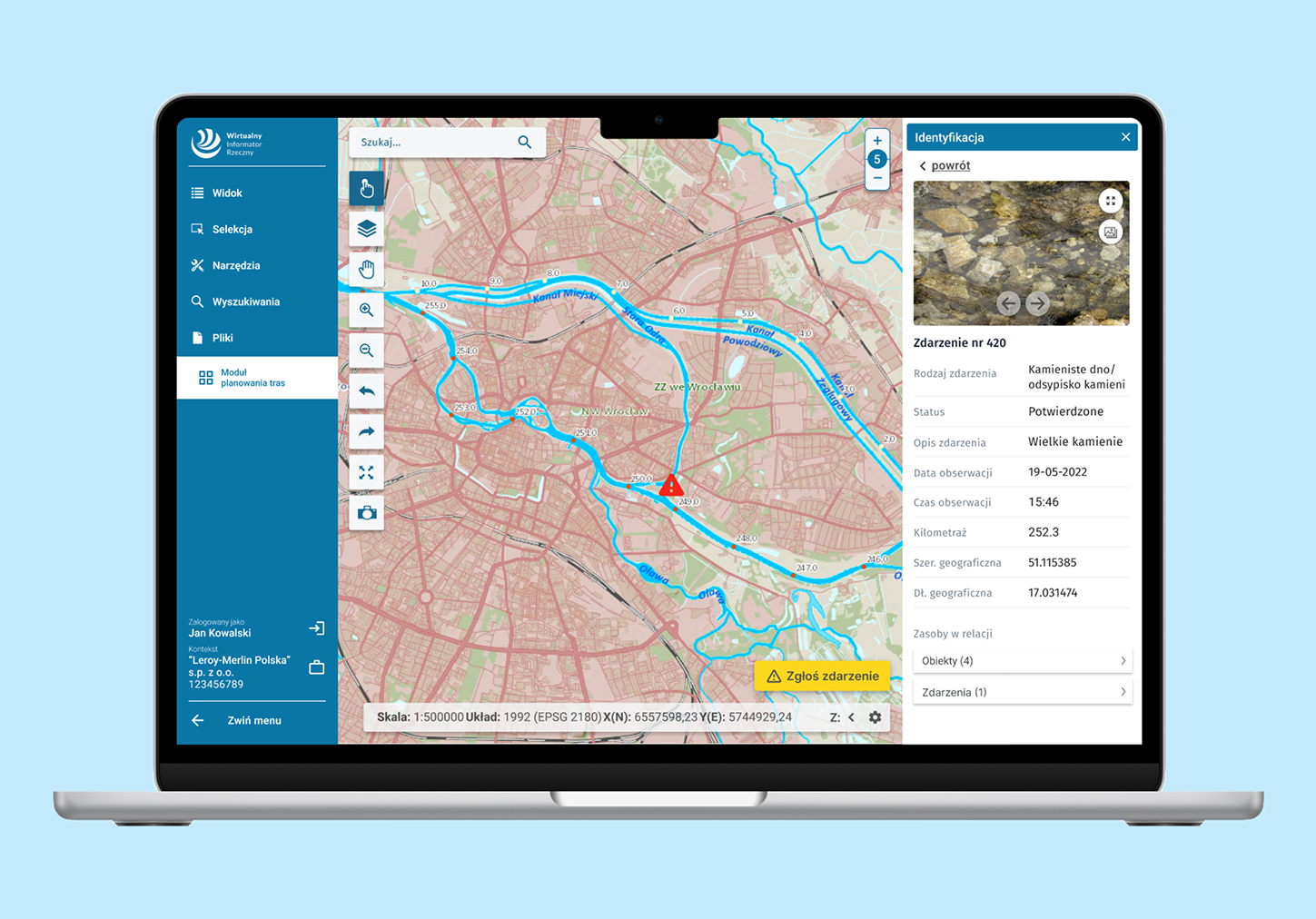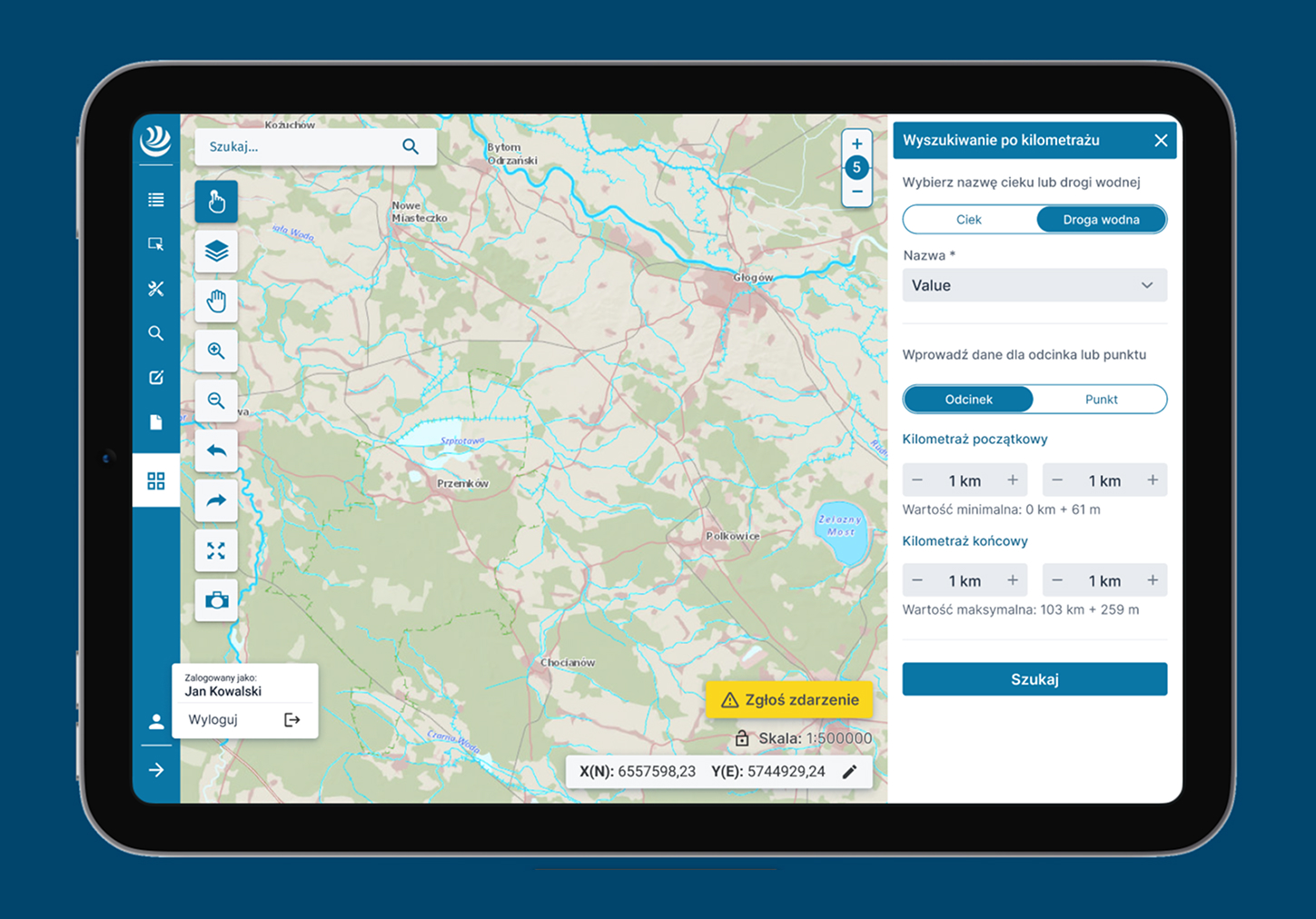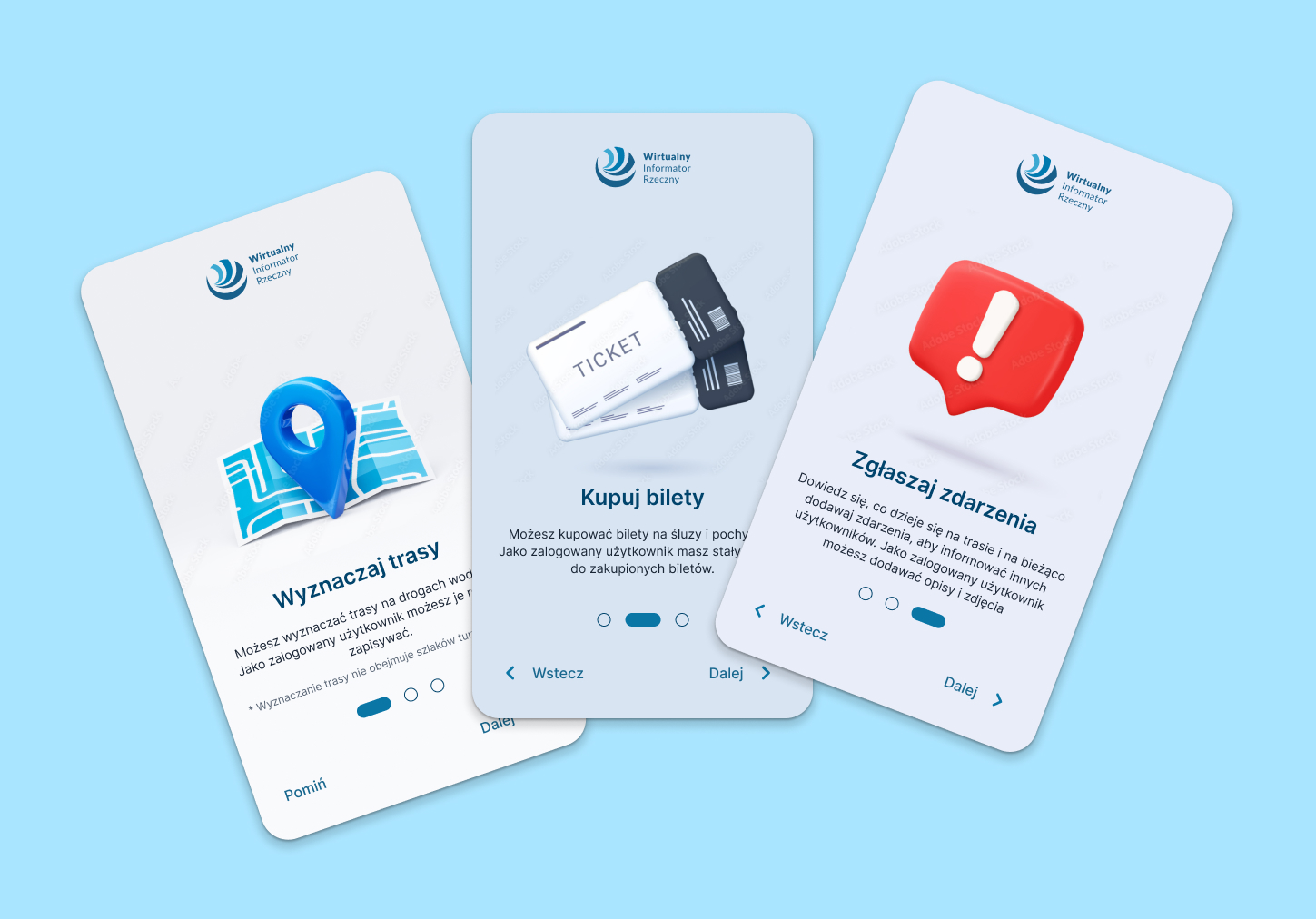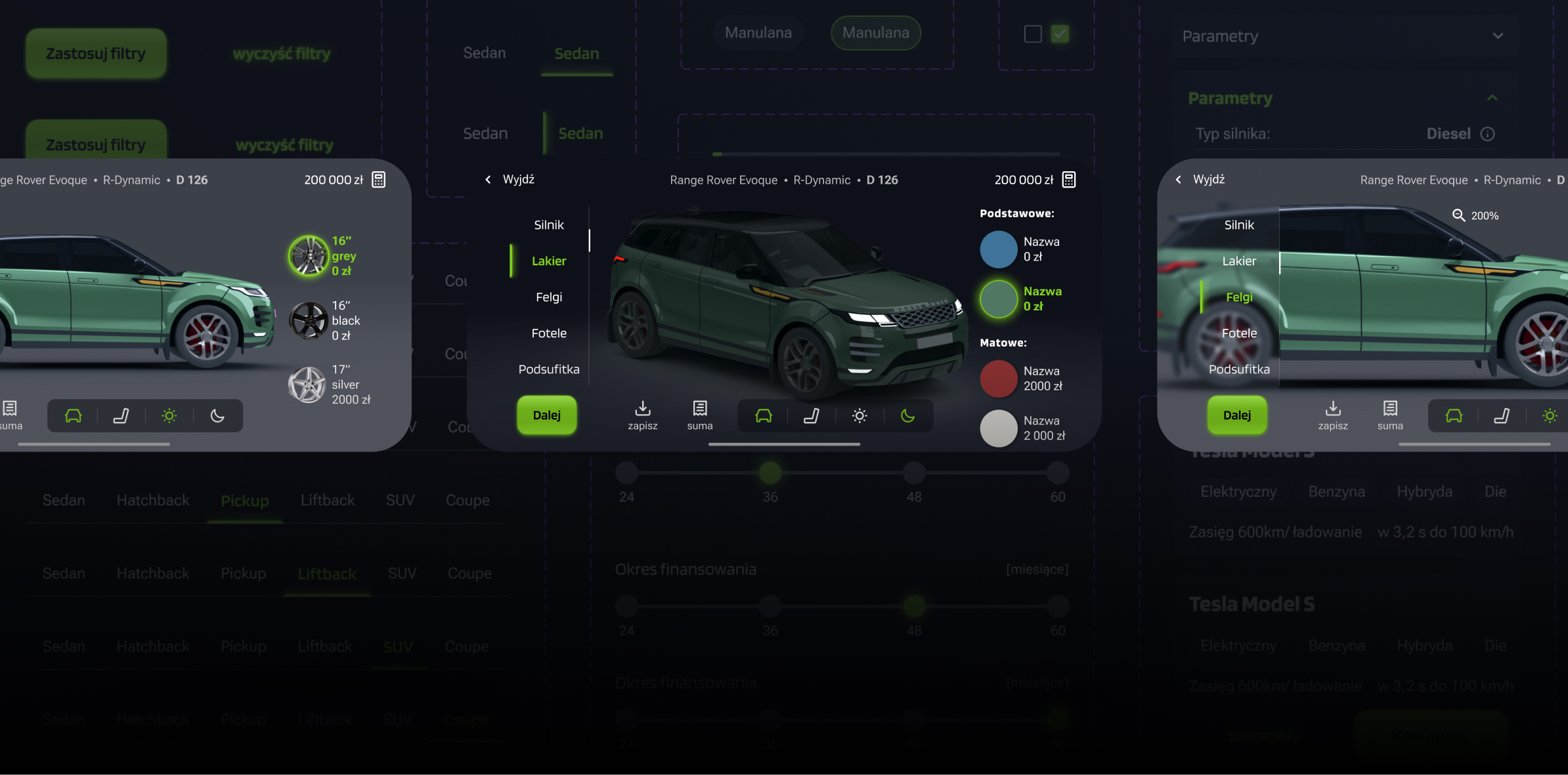Project Overview
Polish inland waterways are an important space for both commercial transport and recreational boating, which has been steadily growing in popularity. Every year, thousands of vessels – from cargo ships to leisure boats – pass through locks and slipways, generating heavy traffic and significant administrative workload. Until recently, the system for settling fees with shipowners and serving recreational users relied mainly on paper documentation and manual procedures, leading to inefficiencies, delays, and the risk of human error.
This project focused on designing a digital solution to streamline the settlement process for the use of locks and slipways, while also making it easier for recreational users to purchase tickets and plan their journeys. The application integrates traffic data from the waterways and creates a shared platform for all key stakeholders – Shipowners, Lock Operators, Recreational Users, and Waterway Administration – ensuring transparency, convenience, and efficient collaboration.
Project Goals
-
Eliminate paper-based processes and manual data entry
-
Streamline payment processing for both shipowners and recreational users
-
Enable route planning and ticket purchase for tourists
-
Availability of applications for phones and tablets
-
Increase transparency and accountability in operations
My Role & Responsibilities
-
User Research
Understood user needs, defined their goals, and aligned them with business objectives through process analysis of locks and inclined planes.
-
Analysis & Ideation
Developed personas, user flows, and initial concepts in creative workshops.
-
Mobile-first Design
Created intuitive apps for boat operators and lock staff, optimized for outdoor use.
-
Cross-team Collaboration
Ensured consistency across modules in cooperation with the administrative team.
-
Testing & Iteration
validated solutions with users and refined designs based on feedback.
Key Statistics
Problem Statement
The existing paper-based system for managing vessel passages through water locks was inefficient, error-prone, and lacked the transparency needed for modern infrastructure management.
Current System Issues
Manual Documentation
- Physical trip cards filled out by hand before each journey
- High risk of cards being lost or damaged during transit
- Illegible handwriting causing processing delays
- No backup copies of critical passage information
Trust-Based Verification
- Verbal confirmation of trip cards at subsequent locks
- No real-time verification of vessel authorization
- Potential for unauthorized passages to go undetected
- Difficulty tracking vessel locations across the waterway system
Payment Processing
- Cash-only payments collected with primitive tools
- Monthly manual coin counting at banks
- No digital payment options for tourists
- Delayed payment processing for commercial operators
Data & Reporting
- Manual compilation of monthly reports
- Limited data for infrastructure planning
- No real-time operational insights
- Difficulty identifying usage patterns and trends
Key Project Challenges
Diverse User Groups
Shipowners, Lock Operators, Administration, and Recreational Users all have different needs and expectations, requiring a flexible solution that balances usability with specialized functions.
Time and Resource Limitations
The project must be delivered with a tight schedule and limited staff, forcing strict prioritization of features and rapid decision-making.
Technical Barriers
Integration with existing systems and infrastructure is complex, while coordination between technical, administrative, and operational teams is challenged by differing priorities and communication styles.
User Personas
Through extensive field research and interviews, I identified three key user groups whose daily routines were significantly impacted by the existing paper-based system.
Bartosz Keja
Commercial Boat Operator
Age 48 • 15 years experience
Background
Bartosz operates commercial vessels transporting goods and passengers across the Masurian Lakes. He makes multiple trips per week and is highly familiar with the current paper-based system, though frustrated by its inefficiencies.
Current Workflow
- Manually fills out trip card before each route
- Hands off physical card at first sluice
- Verbally confirms card existence at subsequent locks
- Submits monthly declarations via post
- Waits weeks for payment processing
Pain Points
- Time-consuming manual paperwork for each trip
- Risk of lost or damaged trip cards
- Delayed payment processing affecting cash flow
- No real-time tracking of trip status
Goals
- Streamline trip documentation process
- Receive faster payment processing
- Access trip history and status information
Andrzej Bełdan
Sluice Operator
Age 52 • 20 years experience
Background
Andrzej manages one of the busiest water locks in the system. He collects fees from recreational users and processes commercial vessel passages, handling both paperwork and cash transactions daily.
Current Workflow
- Collects physical cards from boat operators
- Uses bag-on-stick to collect cash from tourists
- Manually logs all transactions in ledger
- Delivers coins to bank monthly for counting
- Compiles handwritten monthly reports
Pain Points
- Time-consuming cash handling and counting
- Security concerns with large amounts of cash
- Manual record-keeping prone to errors
- Difficulty tracking vessel authorizations
Goals
- Reduce cash handling requirements
- Automate record-keeping and reporting
- Improve vessel verification process
Agata Bosman
Tourists & Leisure Boaters
Various ages • Seasonal visitors
Background
Recreational users include families on vacation, sailing enthusiasts, and canoe rental customers. They typically have limited experience with the lock system and prefer simple, intuitive payment methods.
Current Experience
- Pay cash fees separately at each lock
- Must walk across other boats or pass coins between hands to pay lock keepers
- Risk of dropping money in water during payment
- Limited information about fees and routes
- Uncertain about lock operating hours
Pain Points
- Need to carry exact change for multiple lock payments
- Unsafe payment process requiring walking across other boats
- High risk of losing money during hand-to-hand payments
- Lack of route planning information
- Uncertainty about total trip costs
Goals
- Easy digital payment options
- Clear route and pricing information
- Simple ticket purchasing process
Digital Solution
A comprehensive digital ecosystem designed to transform the waterway operations through mobile applications, web dashboards, and automated processes.
Digital System Components
Boat Operator Mobile App
- Registration and management of current and new vessels
- Smart route planning based on waterway data
- Automatic generation of travel cards
- Real-time navigation alerts and obstacles
- Digital storage of travel documentation
- Automated settlement reports generation
Sluice Operator Interface
- Ticket sales and cancellation management
- Trip registration and tracking
- Travel card verification and entry
- Digital receipt creation and editing
- Real-time vessel status monitoring
- Daily operations reporting
Recreational User App
- Smart route planning with difficulty indicators
- Individual and group ticket purchasing
- Real-time route warnings and alerts
- Facility information and operating hours
- Offline navigation support
- Issue reporting system for waterway difficulties
Administrative Dashboard
- Travel log and route tracking
- Payment analysis and reconciliation
- Declaration verification system
- Automated fee calculation
- Email communication management
Design Process
Wireframes
Tutorial and location search
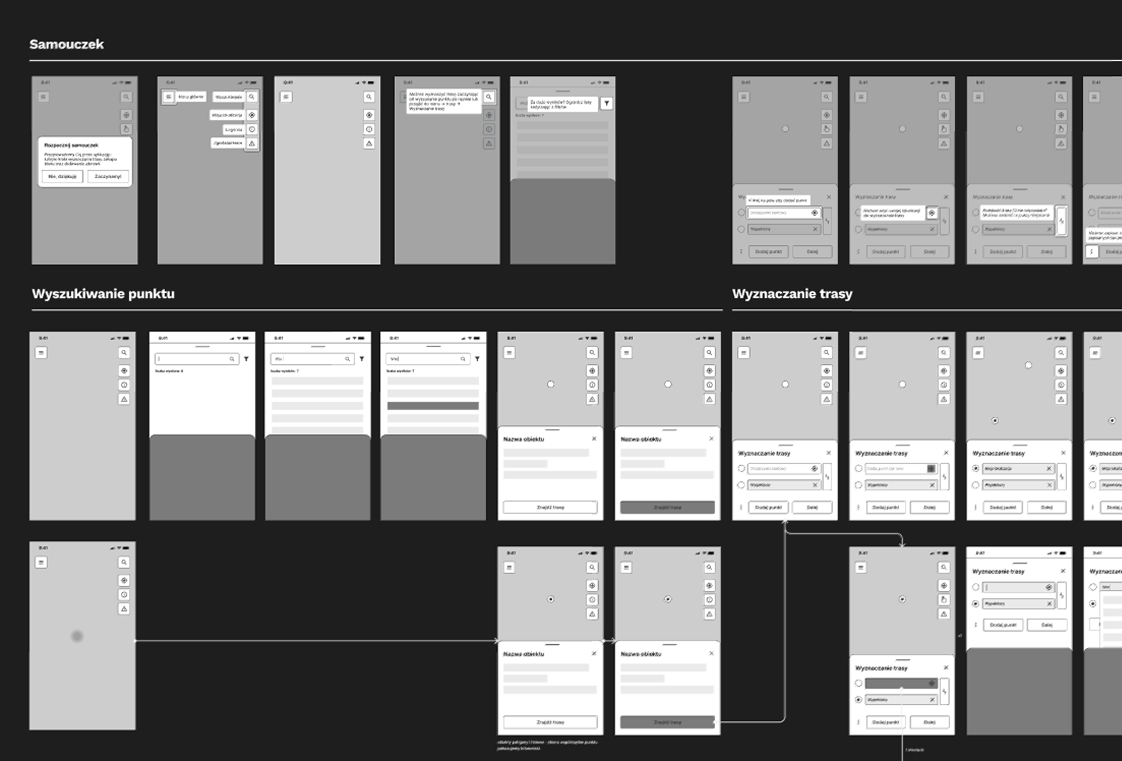
Creative workshops led to the development of standard identification widgets with the functionality of determining the route to a selected point. A concept for a tutorial for new users was also developed.
Route planning
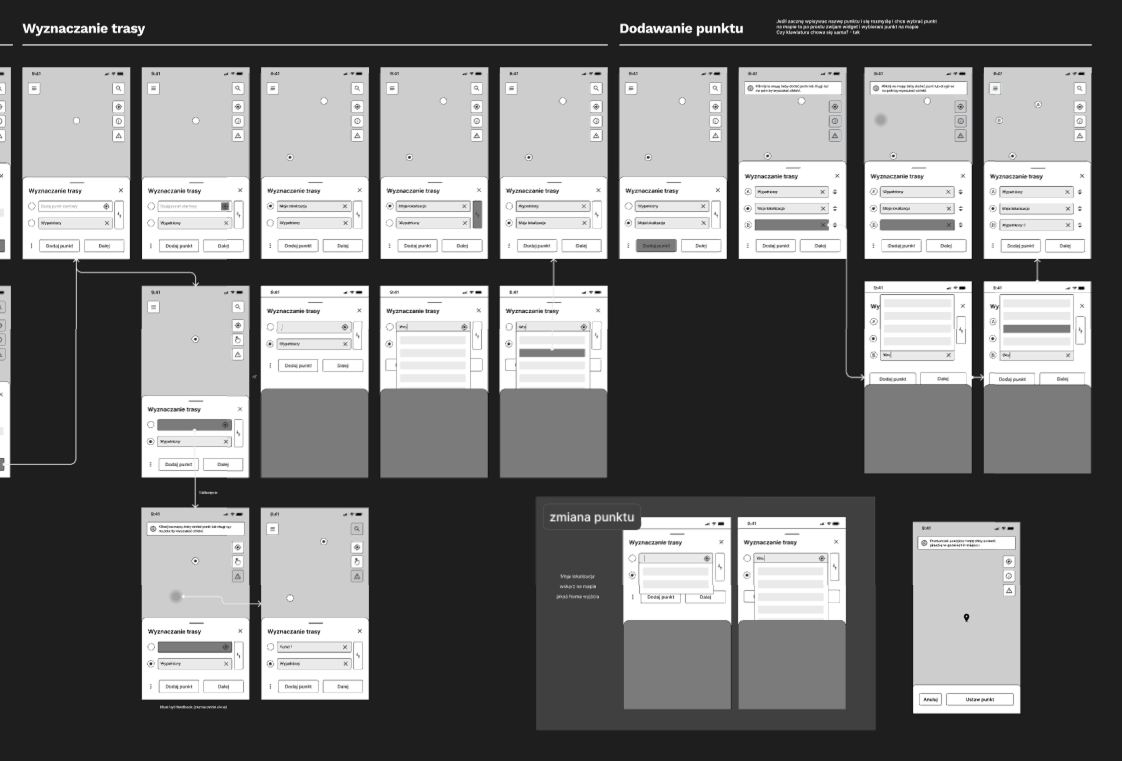
Route search has been thoroughly analyzed, taking into account various scenarios, in order to achieve a compromise between feature richness and simplicity of the process.
Shipowner's section
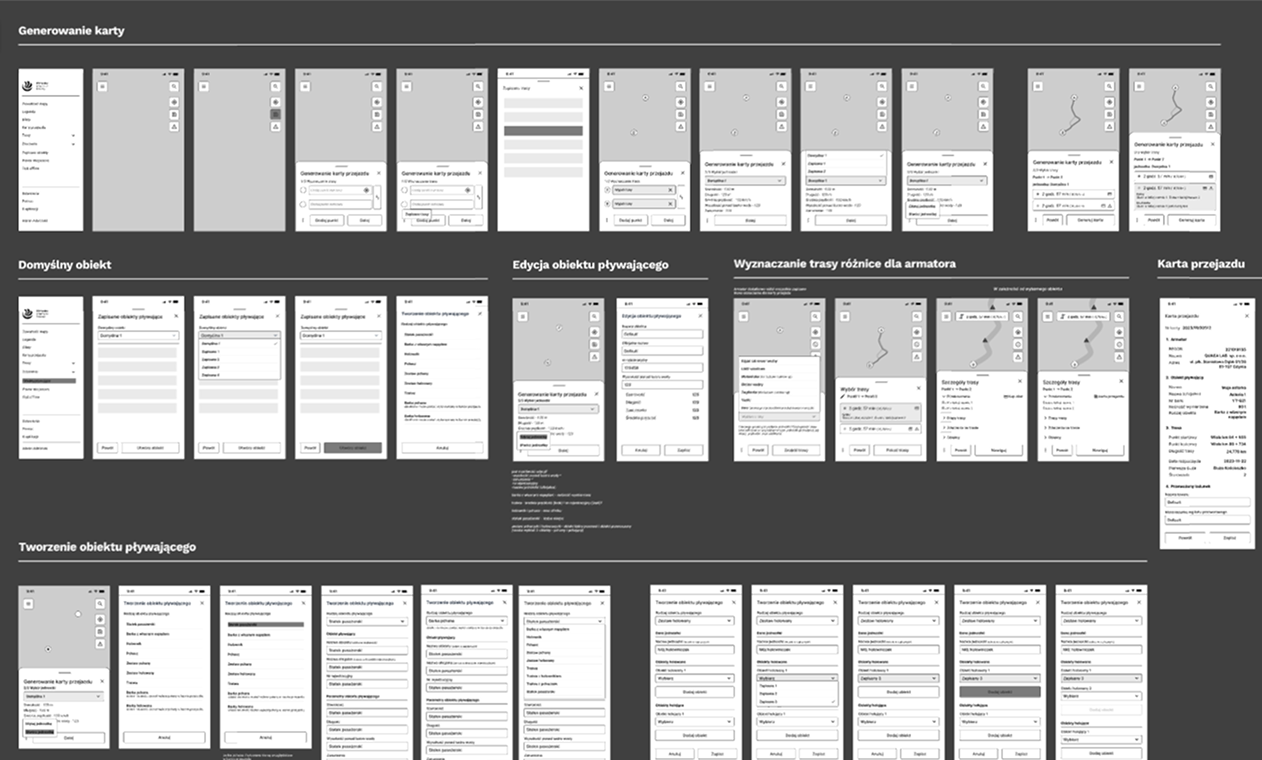
The shipowner version focuses on simplifying the process of creating a passage card and providing easy access to registered vessels and adding new ones.
Ticket purchase
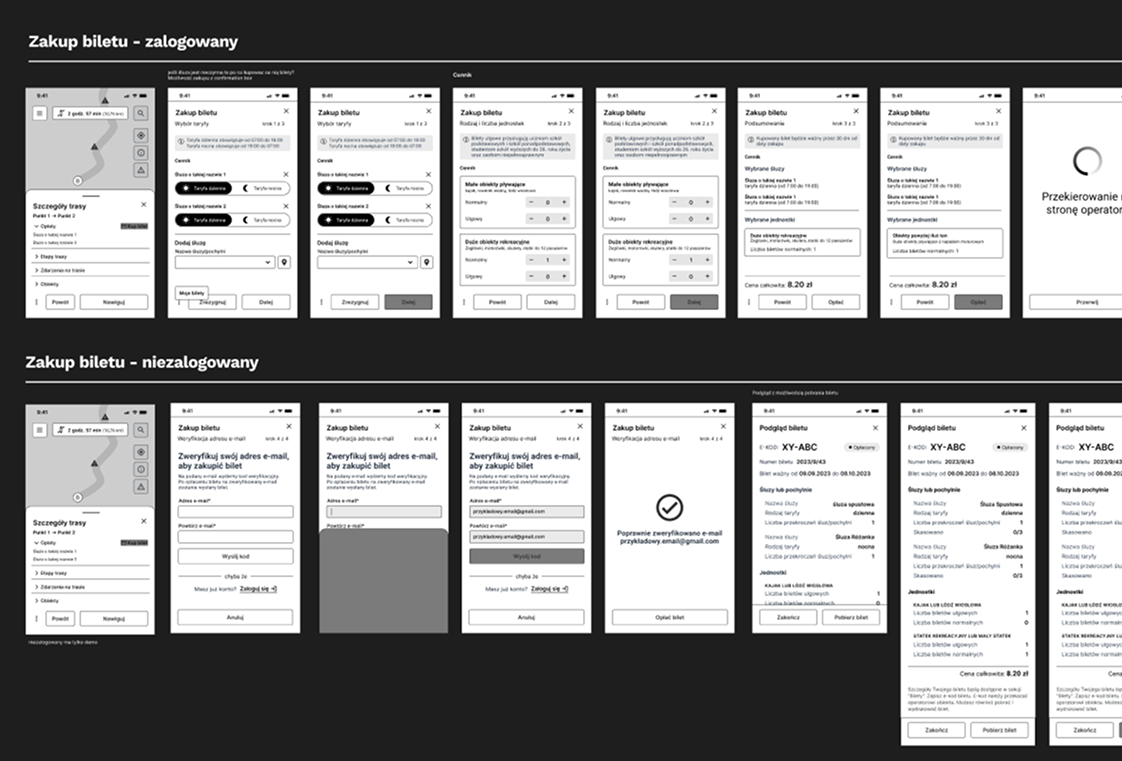
The ticket purchasing process required a creative approach because it is a new feature created from scratch.
Icon System
Navigation Icons
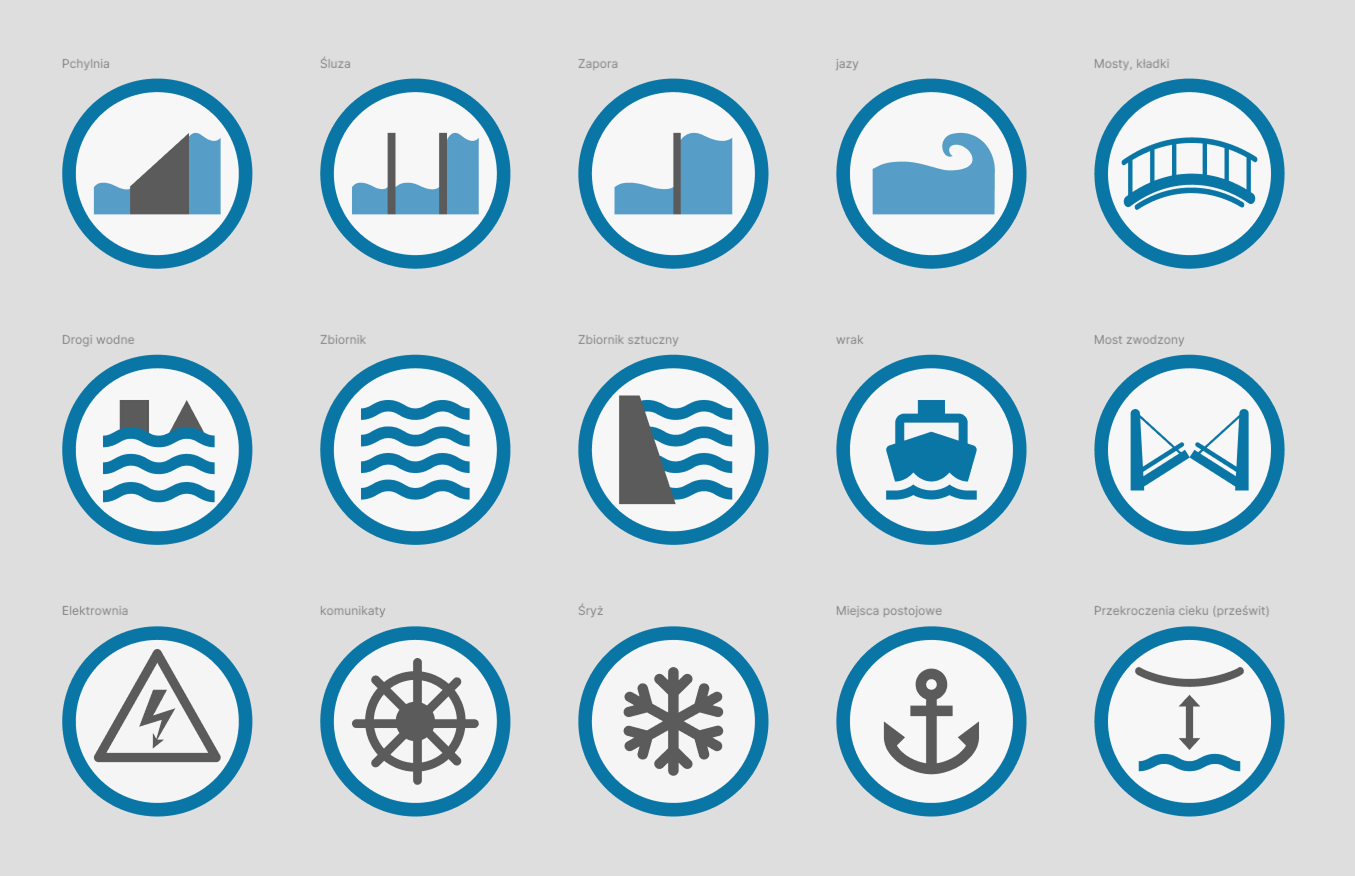
Custom navigation icons designed to provide clear visual cues while maintaining consistency across the platform.
Feature Icons
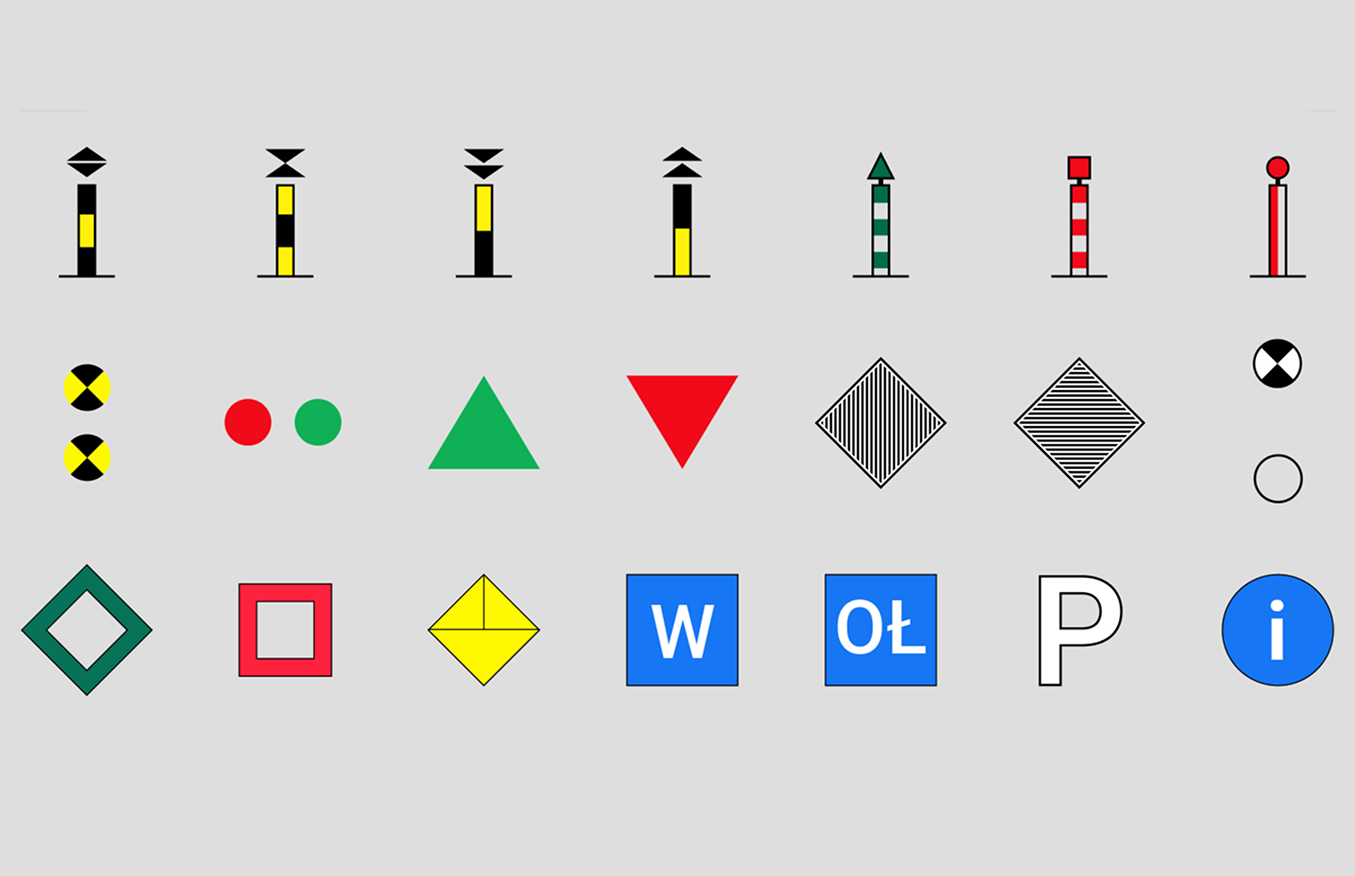
It was also necessary to develop a proprietary set of graphics for the book of symbols used in inland navigation in Poland, in accordance with applicable regulations.
Final Interface Design
Before & After Comparison
A detailed look at how the redesign transformed key aspects of the interface, improving usability and visual consistency while maintaining functionality.
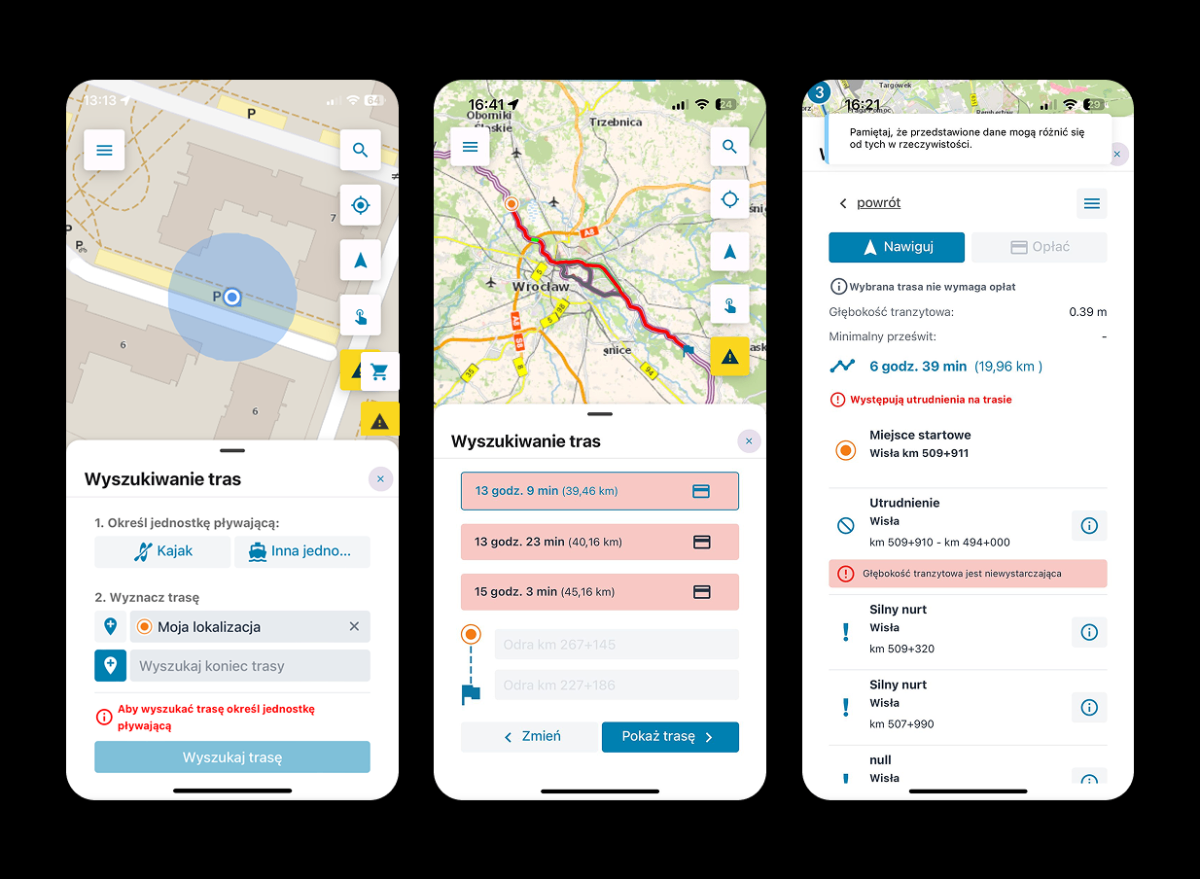
Key Issues
- Difficult start – Too many steps at the beginning. Users had trouble getting through this stage
- Misleading route appearance – All routes appear blocked (red), even when there is no data
- Poor markings – Start/end points and route statuses are difficult to see and read
- Overloaded details – Too much information and warnings, difficult to pick out what is important
- Errors – Incorrect layout and widget behavior
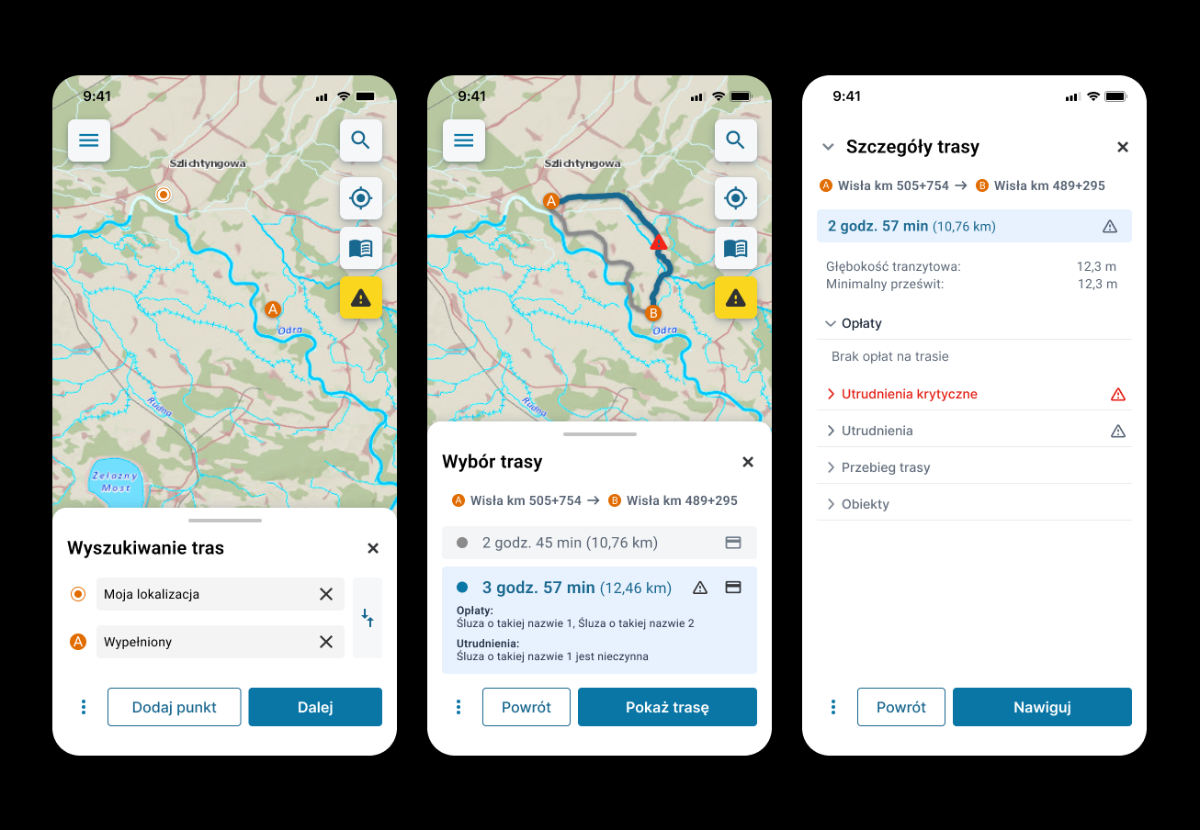
Key Improvements
- Simplified route planning – Breaking down complex processes into manageable steps
- Enhanced navigation features – Point-based routing and flexible path selection
- Improved information display – Clear obstacle warnings and route status indicators
- Customizable interface – User control over information layers and display preferences
